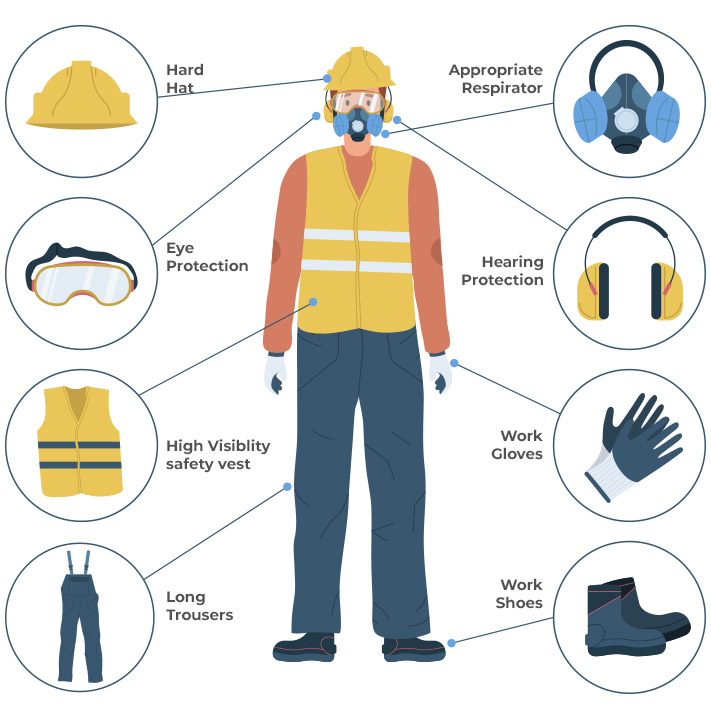How Can Real Estate Developers in India Ensure The Safety of Construction Workers?
- 20th May 2023
- 1706
- 0

Never miss any update
Join our WhatsApp Channel
Steps to Ensure The Safety of Workers at Construction Sites
The number of construction sites in India is at an all time high with the real estate market in India going through a super boom time across all its categories. Right from residential real estate to commercial real estate, industrial developments, retail properties, warehousing and others, the property market in India is developing rapidly.
There are probably lakhs of real estate construction sites operational at this point in time across metros, towns, villages and smaller cities across India.
There are millions of construction workers who toil hard to get these constructions to come to life from the design and concept stage to their actual realisation.
The responsibility of ensuring the welfare of construction workers on construction sites falls squarely on the shoulders of real estate developers. Several measures can be implemented to promote a secure working environment.
Here are some essential tips for the safety of construction workers that Ghar.tv has to share:
Comprehensive Safety Training:
Give all construction personnel top priority for comprehensive safety training programmes. This training should encompass hazard recognition, the correct use of equipment, emergency procedures, and general safety protocols.
Personal Protective Equipment (PPE):
Require the use of PPE, including hard helmets, safety eyewear, high-visibility garments, steel-toed boots, mittens, and respiratory masks. Inspect and maintain the quality of PPE on a regular basis to ensure its effectiveness.

Develop site-specific safety plans that address potential hazards and define safety procedures for each phase of construction. Include comprehensive instructions regarding the safe handling of hazardous materials, operation of heavy machinery, and navigation of the site.
Safety Inspections:
Regular safety inspections should be conducted by trained professionals in order to identify and eliminate hazards promptly. This proactive approach guarantees a safer workplace.
Install plain and visible safety signs throughout the construction site, emphasising potential hazards, safety procedures, and emergency contact information. Safety signage prominently displayed keeps employees informed and reminds them to follow safety procedures.
Implement dependable fall protection systems when working at heights, such as guardrails, safety netting, and harnesses. Provide thorough training on the appropriate use of fall protection apparatus and conduct routine inspections to ensure its efficacy.
Scaffolding and Ladder Safety: Ensure that scaffolding and ladders are installed and maintained properly. Instruct employees on proper usage and inspection procedures. Regularly inspect these structures for flaws or vulnerabilities that could jeopardise their safety.
Safety of Machinery and Equipment:
Inspect and maintain all machinery and equipment on a regular basis to ensure they are in optimal working condition. Provide exhaustive training on the safe operation of equipment and enforce stringent safety protocols.
Develop and disseminate emergency procedures, including evacuation routes, assembly points, and contact information for emergency services. Conduct regular exercises to familiarise employees with these procedures, thereby ensuring effective emergency response.
Conduct regular safety meetings to discuss concerns, communicate updates, and reinforce safety protocols. Foster a proactive safety culture by encouraging employees to disclose safety issues and near-miss incidents.
Supervision and Monitoring:
Assign seasoned administrators with the responsibility of monitoring safety compliance and ensuring protocol adherence. Regularly evaluate safety performance and provide employees and subcontractors with feedback.
Collaboration with Contractors:
Establish explicit safety requirements and expectations in subcontractor agreements. Hold them accountable for preserving a secure workplace. Consistently communicate and collaborate with subcontractors to address safety concerns as a group.
Foster a culture of continuous safety:
Improvement by encouraging worker feedback, investigating incidents, analysing near misses, and implementing corrective measures. Review and revise safety policies and procedures frequently based on lessons learned.
These measures substantially improve the safety of construction workers on construction sites, thereby reducing the likelihood of accidents and injuries. It is essential to comply with local safety regulations and seek advice from safety professionals or consultants in order to achieve the utmost safety standards.

 Admin
Admin

Comments
No comments yet.
Add Your Comment
Thank you, for commenting !!
Your comment is under moderation...
Keep reading blogs